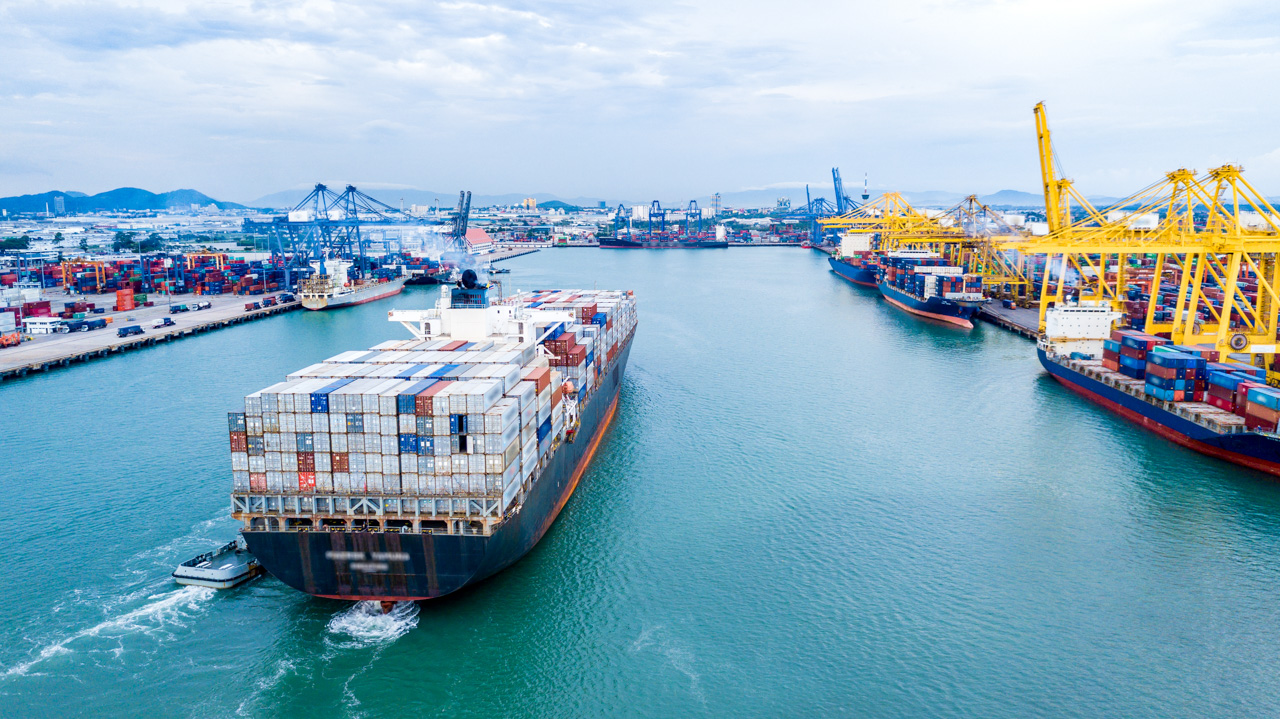การ์ทเนอร์ อิงค์ เผยผู้บริหารด้านซัพพลายเชน (CSCOs) ต้องเพิ่มกลยุทธ์ในการลดอัตราการหยุดชะงักให้กับห่วงโซ่อุปทานโดยการลดความเสี่ยงในพื้นที่หน้างานการผลิต ผลวิจัยของการ์ทเนอร์ยังแสดงให้เห็นว่าองค์กรที่ปรับตัวรับมือกับการหยุดชะงักมีแนวโน้มเจอปัญหานี้น้อยกว่าหนึ่งในสามเมื่อเทียบกับองค์กรอื่นในอุตสาหกรรมเดียวกัน
การ์ทเนอร์ได้กำหนดพื้นที่หน้างานของห่วงโซ่อุปทานอันประกอบไปด้วยจำนวนผลิตภัณฑ์ กระบวนการผลิตต่าง ๆ และเครือข่ายที่เกี่ยวข้องทั้งหมดกับห่วงโซ่อุปทาน ณ ปัจจุบัน โดยแสดงถึงจุดสัมผัสต่าง ๆ ที่อาจเกิดเหตุการณ์ความเสี่ยงได้กับห่วงโซ่อุปทาน
นางสาวซูซี่ เพทรูสิค ผู้อำนวยการฝ่ายวิจัยแนวปฏิบัติด้านห่วงโซ่อุปทานของการ์ทเนอร์ กล่าวว่า “ผู้บริหารด้านซัพพลายเชนควรลดพื้นที่หน้างานของห่วงโซ่อุปทานโดยเน้นกระบวนการทำงานให้ง่ายขึ้นและลดการเคลื่อนย้ายต่าง ๆ ภายในห่วงโซ่อุปทานขององค์กร รวมถึงจำนวนไซต์ทำงานและซัพพลายเออร์ในเครือข่าย เนื่องจากโอกาสเกิดความเสี่ยงที่สูงขึ้น หน้างานการผลิตที่มีพื้นที่ขนาดใหญ่จะได้รับผลกระทบมากกว่าหน้างานขนาดเล็กที่เป็นเสมือนสินทรัพย์ขององค์กร แม้ผู้บริหารซัพพลายเชนจะไม่สามารถควบคุมปริมาณเหตุการณ์ความเสี่ยงที่จะเกิดขึ้น แต่พวกเขาสามารถคุมขนาดของเป้าหมายที่องค์กรต้องการได้”
ธุรกิจห่วงโซ่อุปทานจำนวนมากเกิดการหยุดชะงักได้ง่ายเป็นเพราะการกำหนดเป้าหมายขนาดใหญ่ โดยองค์กรต้องใช้เวลาหลายทศวรรษในการขยายธุรกิจและกระจายความเสี่ยงไปทั่วทั้งเครือข่ายทั่วโลก ขณะเดียวกันก็เพิ่มประสิทธิภาพของต้นทุนให้มากขึ้น หลายกระบวนการกลายเป็นความซับซ้อนและต้องขนย้ายสินค้าและวัสดุมากมายในห่วงโซ่อุปทาน ทำให้ระบบเกิดการหยุดชะงักได้ง่าย
หลายองค์กรในธุรกิจซัพพลายเชนเผชิญกับปัญหาการหยุดชะงักน้อยลงในปัจจุบัน เพราะมีการจัดการควบคุมพื้นที่หน้างานแหล่งผลิตของห่วงโซ่อุปทานโดยจำกัดจำนวนจุดสัมผัสที่เหตุการณ์ความเสี่ยงอาจเกิดขึ้นในองค์กร นั่นคือ จำกัดจำนวนผู้ให้บริการขนส่ง วิธีการจัดส่งและช่องทางจัดส่งให้น้อยลง ตลอดจนเว้นระยะห่างระหว่างผู้ผลิต โรงงาน คลังสินค้าและศูนย์กระจายสินค้าที่ดีมากยิ่งขึ้น โดยกระบวนการเหล่านี้กำลังได้รับการปรับใหม่และทำให้ใช้งานง่ายยิ่งขึ้น
“การควบคุมการหยุดชะงักสร้างความสมดุลด้านความเสี่ยงต่อสภาวะแวดล้อมทั้งหมดร่วมกับหลายเหตุการณ์ความเสี่ยงที่เกิดจากมหันตภัยร้ายเพียงหนึ่งเดียว เป้าหมายไม่ใช่การรวมทุกอย่างไว้ในที่เดียว แต่คือการค้นพบเป้าหมายในขนาดที่เหมาะสมแก่องค์กร ณ ช่วงเวลาใดเวลาหนึ่ง” เพทรูสิค กล่าวเพิ่มเติม

การฝังกลไกควบคุมการหยุดชะงักเพื่อสร้างการรับรู้ นำไปสู่กลยุทธ์ห่วงโซ่อุปทานทั้งหมด
ในส่วนของกลไกควบคุมการหยุดชะงัก เพื่อลดปัญหาการหยุดชะงักคือส่วนหนึ่งของขั้นตอนการวางแผนเชิงกลยุทธ์ที่ต้องนำมาพิจารณาควบคู่ไปกับต้นทุน คุณภาพ และความรวดเร็วในการผลิต อย่างไรก็ตามสิ่งนี้ไม่ใช่การละทิ้งเป้าหมายและกลยุทธ์การดำเนินธุรกิจเดิมในทศวรรษที่ผ่านมา แต่แทนที่ด้วยการที่ผู้บริหารด้านซัพพลายเชนจะสามารถกำหนดการเพิ่มประสิทธิภาพด้านต้นทุนใหม่ที่รวมถึงการคำนวณค่าใช้จ่ายในการหยุดชะงักอย่างต่อเนื่อง
เพทรูสิค ยังกล่าวอีกว่า “ความมุ่งมั่นในการสร้างหน้างานการผลิตที่เหมาะสมที่สุดไม่ได้แปลว่าคุณจะไม่สามารถขยายมันได้อีกต่อไป แต่หมายถึงผู้บริหารด้านซัพพลายเชนต้องเลือกการวางแผนที่ชาญฉลาดและกระจายความเสี่ยงทั้งหมด พวกเขาต้องเข้าใจสภาพแวดล้อมในปัจจุบันว่ามีความยากในด้านการดำเนินการและยากยิ่งขึ้นในการสร้างความน่าเชื่อถือด้านการขนส่ง รวมถึงบริการที่สร้างกำไรให้แก่ลูกค้า โดยควรดำเนินการทันทีเพื่อไม่ให้เกิดการหยุดชะงักตามมาภายหลัง”
การสร้างกลไกการหยุดชะงักช่วยลดต้นทุนและเพิ่มความได้เปรียบด้านการแข่งขัน
องค์กรที่ปรับตัวรับมือกับการหยุดชะงักจะได้รับประโยชน์ในหลากหลายด้าน ทั้งการลดค่าใช้จ่ายในห่วงโซ่อุปทานเนื่องจากประสบปัญหานี้น้อยลง และเมื่อเกิดการหยุดชะงักเครือข่ายการทำงานทั้งหมดจะเตรียมพร้อมรับมือและกู้คืนได้ในเวลาอันสั้น
“ประโยชน์ที่ใหญ่ที่สุด คือ ความได้เปรียบด้านการแข่งขันที่ได้สร้างขึ้น กลไกลการหยุดชะงักมีความพร้อมและรอให้บริการลูกค้าเพื่อเติมเต็มช่องว่างในจุดที่คู่แข่งกำลังเสียรังวัด เพราะพวกเขามัวแต่ยุ่งกับการตอบสนองต่อความเสี่ยงมากเกินไป” เพทรูสิค กล่าวสรุป
ลูกค้าการ์ทเนอร์สามารถคลิกอ่านข้อมูลเพิ่มเติมได้ที่รายงาน “Supply Chain Executive Report: Shaping Supply Chain Disruption in a Volatile Risk Environment”.
